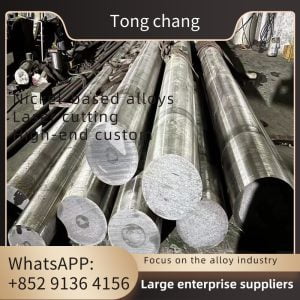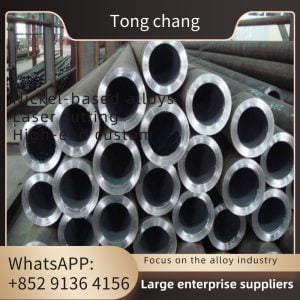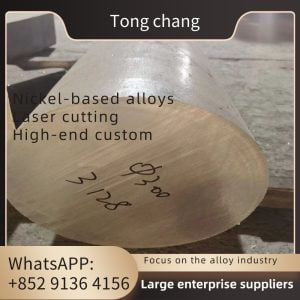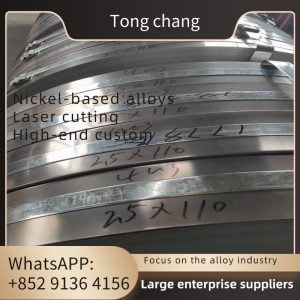| Standard: | ASTM B111 | Copper-Nickel: | C70600, C71500,C71640, C70400 |
|---|---|---|---|
| Condition: | Annealed | Application: | Heating Systems Ventilation Systems Refrigeration And Climate Control Systems Mechanical Engineering Automotive Manufacturing Chemicals And Pertrochemical And Power Plant Technology |
| Material: | Aluminum,Copper,SUS304,Stainless Steel 201,carbon Steel Pipe With Aluminium Spiral Fin | Fin Pitch: | 30 FPI /28 FPI/ 26 FPI/ 36 FPI /43 FPI |
| Tube OD: | 12.7 Mm~25.4mm | Tube Length: | 18 Meters Max. |
| Fin Thickness: | Appr. 0.3mm | Fin Height: | 1.2 Mm ~2.77mm |
| High Light: | Oil Cooler Low Finned Tube, Annealed Copper Nickel Low Finned Tube, ASTM B111 Finned Pipe | ||
ASTM B111 C70600 O61 Annealed Copper Nickel Low Finned Tube for Oil Cooler Pipe
TONG CHUANG supply customised finned tubes to meet specific requirements. We are manufacturer, own complete line of finned tubes includes Extruded Fin Tubes, Spiral Welded Fin Tubes, Embedded Fin Tubes (G-Fin Tubes), L Fin Tubes, LL Fin Tubes, KL Fin Tubes (Knurled Fin Tubes), Square Fin Tubes (H Fin Tubes), Square Fin Tubes (H Fin Tubes), and Square Fin Tubes (H Fin Tubes). Tubes, Square Fin Tubes (H-Fin Tubes), Rectangular Fin Tubes (Double H-Fin Tubes), Longitudinal Fins High-frequency welded serrated finned tubes and high-frequency welded solid finned tubes.
Specifications
| Items | General Materials | Popular ASTM Materials |
| Core Tube Material | Carbon steel, low-alloy steel, stainless steel, brass, copper, cooper-nickel alloys, aluminum bronze, nickel alloys. | 1. Carbon Steel: A179, A192,SA210 Gr A1/C,A106 Gr B 2. Stainless Steel: TP304/304L,TP316/TP316L 3. Copper:UNS12200/UNS14200/UNS70600, CuNi70/30,CuNi 90/10 4. Titanium: B338 Gr 2 |
| Fins Material | Aluminum & Copper. | 1. Aluminum(Alu.1100,Alu.1060) 2. Copper. |
- Heat exchangers in power plants (nuclear, electric, thermal and geothermal power plants)
- Chemical and petrochemical industries
- Highly corrosive systems (evaporators, condensers…)
- Food processing and refrigeration industries
Advantages of low-finned tubes
- 2.5-3 times the external surface area of bare tubes
- Increased heat exchanger efficiency means fewer tubes are needed to accomplish the same heat transfer as bare tubes
- Low finned tubes can improve the performance of existing exchangers without the difficult and expensive task of building new housings
- Reduced space and weight are valuable for offshore production or high altitude distillation towers. Low fin technology can transform large shell and tube heat exchangers into compact heat exchangers
Delivery Condition
Annealed Tempers ‘O’ series
| O10 | Cast and annealed (homogenized) |
| O11 | As-cast and precipitation heat treated |
| O20 | Hot forged and annealed |
| O25 | Hot rolled and annealed |
| O30 | Hot extruded and annealed |
| O31 | Extruded and precipitation heat treated |
| O40 | Hot pierced and annealed |
| O50 | Light annealed |
| O60 | Soft annealed |
| O61 | Annealed |
| O65 | Drawing annealed |
| O68 | Deep-drawing annealed |
| O70 | Dead-soft annealed |
| O80 | Annealed to temper,1/8 hard |
| O81 | Annealed to temper,1/4 hard |
| O82 | Annealed to temper,1/2 hard |
Applications
- Heat exchangers units for power plant(electric, nuclear, thermal and geothermal power plants);
- High corrosive systems (condensers, evaporators, sea water desalinations, fertilizing, urea systems, ammonia, gas, corrosive acids);
- The petroleum, chemical and petrochemical industries;
- The food processing and refrigeration industries;
- Natural gas treatment;
Previous:
Next:








